Search the Special Collections and Archives Portal
Search Results
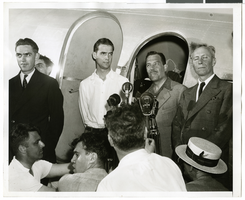
Photograph of Howard Hughes and his crew in Floyd Bennett Field, New York, July 10, 1938
Date
1938-07-10
Archival Collection
Description
The black and white view of Howard Hughes and his crew at Floyd Bennett Field in New York. Typed onto a piece of paper attached to the image: "Before Hughes hopped off for Paris. Left to right: Edward Lund, Flight Engineer, Howard Hughes, Grover Whalen, Harry Connor, Navigator and Dick Stoddard Radio Engineer. At Floyd Bennett Airport 7/10/38."
Image
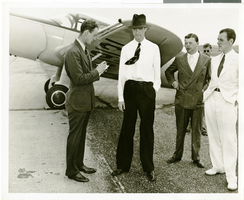
Photograph of Howard Hughes with unidentified men, New York, circa 1938
Date
1938
Archival Collection
Description
Howard Hughes talking to unidentified men who are presumably members of the press most likely about his completion of his Round the World flight in New York City, New York.
Image
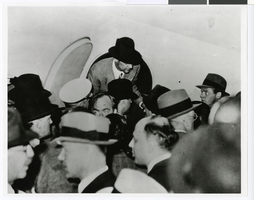
Photograph of Howard Hughes exiting the Lockheed-14 at the Floyd Bennett Airport, New York, July 14, 1938
Date
1938-07-14
Archival Collection
Description
Howard Hughes getting out of cabin door of Lockheed-14 at the Floyd Bennett Airport in New York in 1938.
Image
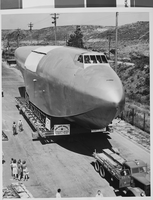
Photograph of Howard Hughes' Hercules, Culver City, California, June 16, 1946
Date
1946-06-16
Archival Collection
Description
Description given with photograph: "Fuselage of Hughes' Hercules Leaves Hangar, Culver City, Calif - Cautiously moving down the field on dollies after leaving the Culver City, Calif., plant hangar, the 200-foot hull-fuselage of Howard Hughes' Hercules is made ready for the 28-mile trip to Terminal Island, Calif., where the air giant will be assembled. NY 80 Credit Line (ACME) 6/16/46."
Image
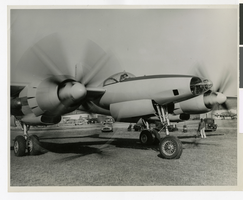
Photograph of Howard Hughes in the first XF-11, Culver City, California, 1946
Date
1946
Archival Collection
Description
Howard Hughes in the cockpit of his XF-11 airplane before his first test flight.
Image
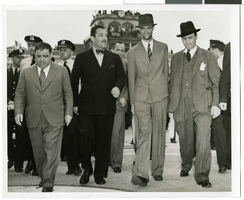
Photograph of Howard Hughes and Grover Whalen at Floyd Bennett Airfield, New York, July 14, 1938
Date
1938-07-14
Archival Collection
Description
A view of Howard Hughes and Grover Whalen leaving Floyd Bennett Airfield.
Image
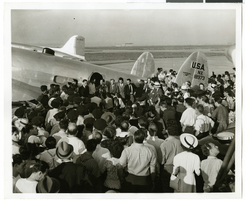
Photograph of Howard Hughes and his crew in Floyd Bennett Field, New York, July 10, 1938
Date
1938-07-10
Archival Collection
Description
The black and white view of Howard Hughes and his crew surrounded by a crowd before they take off from Floyd Bennett Airport in New York.
Image
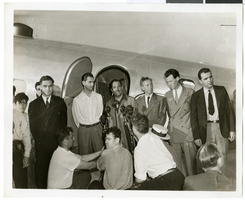
Photograph of Howard Hughes and his crew in Floyd Bennett Field, New York, July 10, 1938
Date
1938-07-10
Archival Collection
Description
The black and white view of Howard Hughes and his crew surrounded by a crowd before they take off from Floyd Bennett Airport in New York.
Image

Photograph of Howard Hughes talking to an unidentified man, Chicago, 1938
Date
1938
Archival Collection
Description
Howard Hughes conversing with an unidentified man after landing the Lockheed 14 aircraft in Chicago.
Image
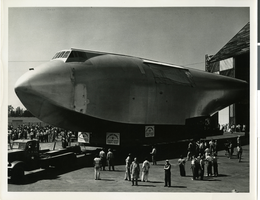
Photograph of the fuselage of the Howard Hughes' Flying Boat, Culver City, California, 1946
Date
1946
Archival Collection
Description
A section of Howard Hughes' "Spruce Goose" or "Flying Boat" being moved (with a police escort) from the Hughes Aircraft plant in Culver City, California to Terminal Island in the Los Angeles Harbor where the plane was assembled in June of 1946.
Image
Pagination
Refine my results
Content Type
Creator or Contributor
Subject
Archival Collection
Digital Project
Resource Type
Year
Material Type
Place
Language
Records Classification
